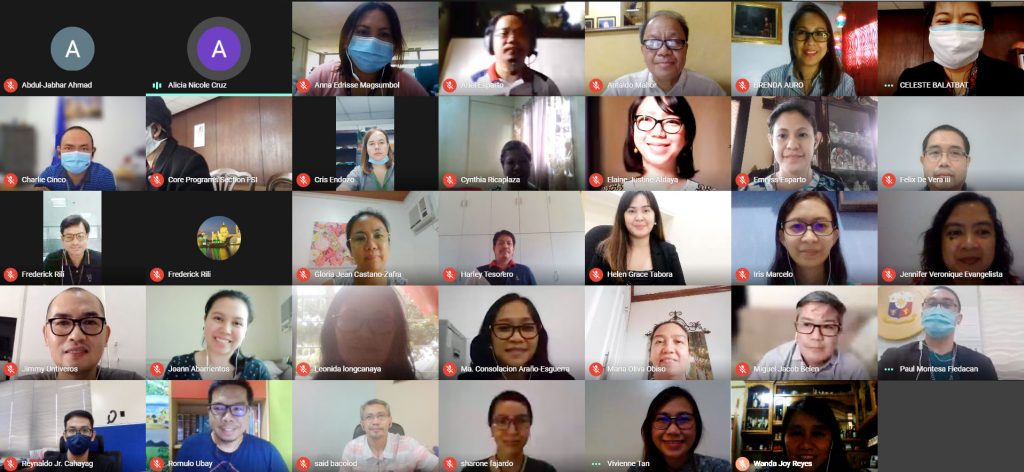Organization
Freedom of Information-Program Management Office (FOI-PMO)
Best Practice Focus Area/s
Strategy; Citizens / Customers; Measurement, Analysis, and Knowledge Management
Year Implemented
The FOI Roadshows and Campus Caravans were officially launched in January 2017 and January 2018, respectively, up to February 2020.
This is a GBPR entry
Summary
The Freedom of Information-Program Management Office (FOI-PMO is the designated lead agency in the implementation of Executive Order (EO) No. 2, s. 2016 or the Freedom of Information (FOI) Program, which aims to foster an informed and engaged citizenry by promoting and advocating access to information across the country through the conduct of FOI Roadshows, FOI Campus Caravans, and Press Freedom Caravans (PFC). This is to cater to the FOI Program’s stakeholders, including national government agencies, local government units (LGUs), civil society organizations (CSOs), the academic community, and the media, among others.
Background and Problem
The vision of the Freedom of Information (FOI) program is to regain public trust by revolutionizing how the government discloses information to the citizens—ensuring that government agencies respond to citizen concerns and provide the information that they need all within 15 to 35 working days. Building trust and confidence among Filipinos and the public service through an interactive process, the FOI program provides government information: research, statistics, data, reports, maps, and policies. The FOI program aims to empower citizens and make them smarter.
As part of PCOO’s information, education, and communication (IEC) campaign, the main objectives of the FOI Roadshows, FOI Campus Caravans, and PFC are the following:
- Increase media and information literacy to promote responsible handling and sharing of information and end the proliferation of fake news;
- Raise civic awareness on transparency and accountability in governance through the FOI Program;
- Partner with educational institutions to include the FOI Program in their curriculum and promote FOI as an academic tool for research; and,
- Inform stakeholders of the national government’s efforts to enhance the protection of local media through the Presidential Task Force on Media Security (PTFoMs) and educate the public on the government’s campaign against illegal drugs through Rehabinasyon.
Based on the 2017 data of the FOI-PMO for the classification of online public users per region, the majority of requests come from Luzon, which comprises 80% of the overall request in the eFOI Portal; 16% of requests were split evenly from Mindanao and Visayas, and the remaining were either from overseas or invalid requests. This only implies that access to information is still “metrocentricâ€â€”a challenge that the FOI-PMO has been trying to overcome ever since the program was launched in 2016.

Solution and Impact
To address the disconnect on the “supply and demand side†of information, the conduct of FOI Roadshows, FOI Campus Caravans, and PFC are beneficial to strategically widen the reach of the FOI Program to effectively and efficiently raise awareness and develop the capacities of Filipinos in their right to access information. These activities not only help in disseminating valuable information about the government’s flagship programs but also aid in involving the citizens in taking part in civic discourse and public affairs.
The FOI Roadshows and Campus Caravans are also anchored on the principles of open government: transparency, accountability, and civic engagement. Although much emphasis is given to the last principle, increased people’s participation is a byproduct of a transparent and accountable government. By reaching out to citizens to raise public awareness on how they can utilize the FOI Program to inform, educate, innovate, and participate in public life, they are likewise allowed to build on their capacities as citizens of a democratic society, constitutionally mandated with a right to access information, which was also enabled under EO No. 2, s. 2016.
To date, the PCOO has conducted a total of twenty-seven (27) FOI Roadshows, twenty-two (22) FOI Campus Caravans, and ten (10) Press Freedom Caravans from 2017 to 2020. It has reached 29 cities and municipalities within the Philippines and six (6) countries abroad, thereby achieving its mission of promoting increased information access throughout the country. This is supported by the data gathered on the number of online users and the number of requests for information received through the eFOI Portal, as presented in the FOI Annual Report 2018/19.
Milestones/Next Steps
The PCOO, through the FOI-PMO, has formed partnerships with eighteen (18) state universities and colleges (SUCs) across the country through a Memorandum of Understanding (MOU) which formalized the inclusion of the FOI Program into the curriculum as well as the continuous promotion of the program within the academic community to ensure the sustainability of the existing engagement.

